What is karate?
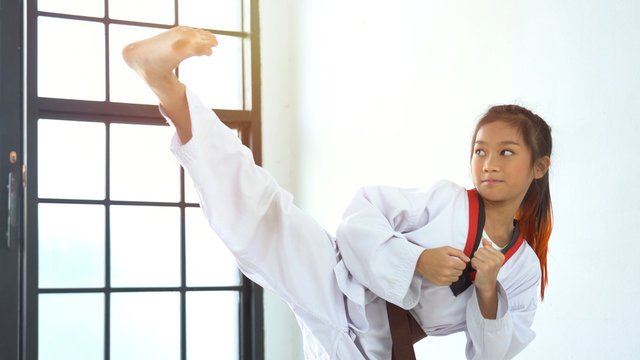
Karate is a martial art that originated in Okinawa, Japan, and has since spread globally, becoming one of the most popular and widely practiced martial arts. Its development was influenced by indigenous Okinawan fighting styles and Chinese martial arts, particularly Fujian White Crane. The word “karate” is derived from the Japanese words “kara,” meaning empty, and “te,” meaning hand, symbolizing a fighting style that does not rely on weapons but on empty-handed techniques.
Historical Background
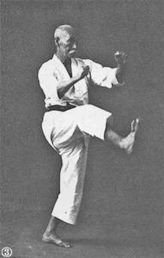
Karate’s roots can be traced back to the Ryukyu Kingdom, an independent kingdom in Okinawa, where local martial arts known as “te” or “ti” (meaning hand) were practiced. These indigenous forms of combat were influenced by the Chinese martial arts brought over by Chinese visitors and settlers. In the late 19th and early 20th centuries, as Okinawa became more integrated with Japan, these martial arts began to be formalized and categorized. Key figures in this development include Gichin Funakoshi, who is often credited with popularizing karate in mainland Japan.
Funakoshi introduced karate to Japan in the early 1920s, emphasizing its philosophical and spiritual aspects alongside its physical techniques. He founded Shotokan karate, one of the major styles, and worked to make karate an integral part of Japanese physical education. His efforts were instrumental in transforming karate from a regional martial art into a worldwide phenomenon.
Styles of Karate
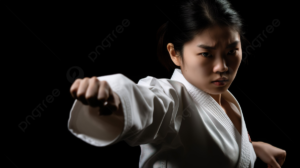
Karate has evolved into several distinct styles, each with its own techniques, training methods, and philosophical approaches. Some of the major styles include:
- Shotokan: Founded by Gichin Funakoshi, Shotokan emphasizes long, deep stances and powerful linear techniques. It is known for its disciplined approach and structured training methods.
- Goju-Ryu: Founded by Chojun Miyagi, Goju-Ryu combines hard and soft techniques. It emphasizes circular movements and incorporates both striking and grappling techniques.
- Shito-Ryu: Founded by Kenwa Mabuni, Shito-Ryu is known for its diverse techniques and forms, drawing heavily from both Okinawan and Chinese martial arts. It focuses on speed, fluidity, and versatility.
- Wado-Ryu: Founded by Hironori Otsuka, Wado-Ryu blends karate with jujutsu, emphasizing evasion, body shifting, and joint locks.
Fundamental Techniques
Karate is built on a foundation of basic techniques, known as “kihon.” These techniques include:
- Kihon (Basics): The foundational techniques of karate, including punches (tsuki), strikes (uchi), kicks (geri), and blocks (uke). Mastery of kihon is essential for the effective application of more advanced techniques.
- Kata (Forms): Pre-arranged sequences of movements that simulate combat scenarios. Kata are designed to teach students the principles of movement, timing, and application of techniques. Each kata has its own specific focus and can range from simple to highly complex.
- Kumite (Sparring): The application of techniques in a controlled, competitive environment. Kumite can range from pre-arranged drills to free sparring, allowing practitioners to test their skills against an opponent. It helps develop timing, distance, and strategy.
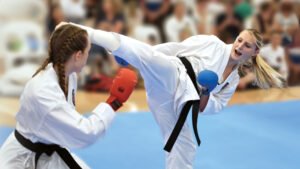
Training and Philosophy
Karate training is rigorous and disciplined, encompassing physical conditioning, technical drills, and mental focus. The training regimen typically includes:
- Warm-Up: Stretching and exercises to increase flexibility, strength, and endurance.
- Kihon: Repetitive practice of basic techniques to develop muscle memory and precision.
- Kata: Practice and refinement of forms, focusing on proper technique, timing, and breathing.
- Kumite: Sparring practice to apply techniques in a dynamic environment, improving reaction time and adaptability.
- Cool-Down: Stretching and relaxation exercises to aid recovery and prevent injury.
The philosophy of karate is deeply rooted in the concept of “Do” or “The Way,” which emphasizes the development of character and the pursuit of perfection. Karate-do is not just a physical practice but a way of life, promoting values such as respect, humility, self-discipline, and perseverance. Practitioners are encouraged to apply the principles of karate in their daily lives, striving to become better individuals both inside and outside the dojo.
Belt System
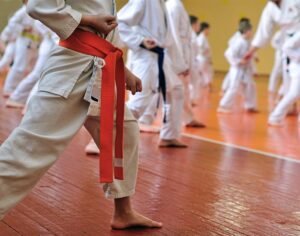
Karate employs a ranking system to indicate a practitioner’s level of skill and experience. This system typically uses colored belts, with beginners starting at white and progressing through various colors to black. The specific colors and order can vary between styles, but common belt colors include white, yellow, orange, green, blue, brown, and black.
- Kyu Ranks: The ranks before black belt, often indicated by colored belts. Each kyu rank requires the demonstration of specific techniques and kata.
- Dan Ranks: The ranks after achieving a black belt, often indicated by a series of degrees (e.g., first-degree black belt, second-degree black belt, etc.). Dan ranks signify advanced proficiency and are often accompanied by additional responsibilities, such as teaching and mentoring.
Modern Karate
Today, karate is practiced worldwide, with millions of practitioners and numerous organizations dedicated to its promotion. It is included in the curriculum of many schools and universities and is a popular choice for self-defense training. Karate has also become a competitive sport, with events such as kata and kumite competitions held at local, national, and international levels. The World Karate Federation (WKF) is the main governing body for sport karate and was instrumental in karate’s inclusion in the Tokyo 2020 Olympic Games.

Despite its modern evolution and global spread, karate remains deeply connected to its traditional roots, emphasizing the importance of respect, discipline, and personal growth. Whether practiced as a means of self-defense, a competitive sport, or a path to self-improvement, karate continues to inspire and empower people of all ages and backgrounds.
Post Comment